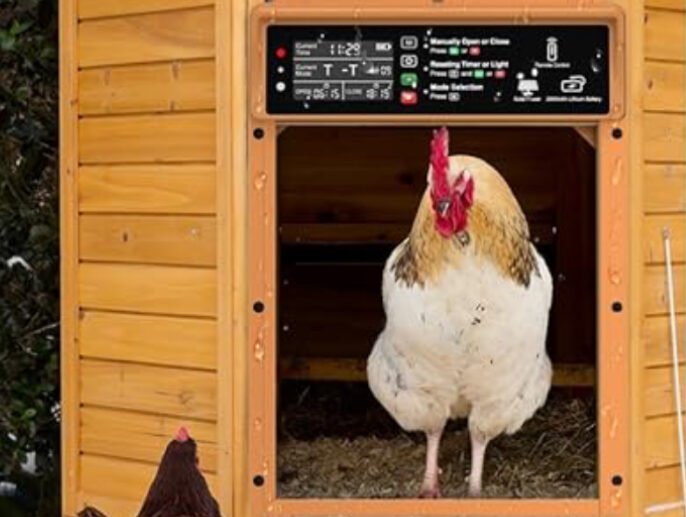Pineapple on Door Meaning: We Reveal All You Need To Know

Pineapples have long been associated with hospitality and welcome, and are often found as decorations in homes and businesses. But what is the meaning behind this symbol, and where did it come from?
According to popular belief, pineapples were first brought to Europe by Christopher Columbus after his second voyage to the Americas. The fruit quickly became a symbol of wealth and status, as it was rare and expensive to import.
As a result, pineapples were often used as centerpieces in lavish feasts and displayed prominently in homes of the wealthy. Over time, the pineapple became a symbol of hospitality and welcome, as it was seen as a way to impress and welcome guests.
However, recent search results suggest that there may be more to the pineapple symbol than just hospitality. An upside-down pineapple, for example, is said to be a symbol for swingers or those interested in partner-swapping. While this meaning is not widely known or recognized, it is important to note that symbols can have different meanings in different contexts.
Pineapple in Social Contexts
Swinging and Open Relationships
In some social contexts, the pineapple has been used as a symbol for swingers. According to urban legends, an upside-down pineapple in a grocery shopping cart meant that the shopper was a swinger looking for other swingers. However, this claim has been debunked as a myth, and there is no evidence to support it.
Nonetheless, the pineapple has been associated with open relationships and non-monogamous partnerships. In some swinger communities, pineapple-themed clothing or accessories are worn to identify oneself as a swinger or to signal openness to non-monogamous relationships. However, this usage is not universal, and pineapples are not exclusively associated with swingers or non-monogamy.
The Significance of Upside Down Pineapples on Cruise Ships
For years, the cruising industry has been abuzz with debates and conjecture about upside-down pineapples. Traditionally, a pineapple symbolizes hospitality, but when flipped upside down and displayed on a cruise stateroom door, it’s widely interpreted as a signal for swinging, inviting others to join in adult activities.
But what about wearing pineapple-themed attire without signaling interest in swinging? Is it necessary for the pineapple to be displayed upside down on the door for this implication?
On cruise ships and elsewhere, pineapples, particularly when upside down, have become a covert emblem among swingers. Whether it’s a badge, clothing item, or an emblem on someone’s door, an upside-down pineapple is often a discreet hint towards seeking partner exchange or extending an invitation to swinger gatherings.
Pineapple in Business and Community
The pineapple has a long history as a symbol of hospitality and welcome in business and community settings. In colonial America, pineapples were a luxury item that only the wealthy could afford. As a result, displaying a pineapple as a decoration or serving it at a party became a way to signal one’s wealth and generosity.
Over time, the pineapple evolved to represent warmth, friendship, and good cheer towards visitors both expected and unexpected. Today, pineapples are often used as decorative elements in hospitality settings such as hotels, restaurants, and cruise ships. Pineapple-shaped door knockers and plaques are also common in residential areas to show goodwill towards neighbors and visitors.
Historical Significance of Pineapples
Pineapples have been a symbol of hospitality for centuries, and their meaning has evolved over time. In this section, we will explore the historical significance of pineapples in different parts of the world, from Colonial America to Victorian England.
Colonial America and Europe
In Colonial America, pineapples were a rare and exotic fruit that were difficult to obtain. As a result, they became a symbol of wealth and status, and were often displayed as a centerpiece at dinner parties or other social events. Pineapples were also used as a way to welcome guests into one’s home, and were seen as a sign of hospitality and generosity.
In Europe, pineapples were even more rare and expensive, and were often rented for special occasions. This led to a brand new pineapple rental market taking the European gentry by storm, writes historian Mary V. Thompson. Until, by the 1700s, Europeans started growing them in their own hothouses.
Christopher Columbus and the New World
Pineapples were first discovered by Christopher Columbus in 1493 during his second voyage to the New World. He brought them back to Europe, where they quickly became a symbol of wealth and status. Pineapples were so rare and expensive that they were often used as centerpieces at dinner parties, and were sometimes even rented for an evening.
Victorian England and Wealth
In Victorian England, pineapples were still seen as a symbol of wealth and luxury. They were often used as a decorative element in architecture and design, and were even carved into furniture and other decorative objects. Pineapple-shaped lamps, vases, and other household items were popular during this time period, and were seen as a way to display one’s wealth and status.
Pineapple as a Symbol
Pineapple is a symbol that has been used for centuries to convey different meanings. This fruit has been associated with hospitality, good cheer, and good luck. In this section, we will explore the different interpretations of pineapple as a symbol.
Universal Symbol of Hospitality
One of the most common interpretations of pineapple as a symbol is hospitality. Pineapple has been used as a universal symbol of hospitality for centuries.
It is believed that the tradition of using pineapple as a symbol of hospitality dates back to colonial times when pineapples were considered a luxury item only afforded by the wealthy. Pineapple was a rare and exotic fruit that was difficult to obtain, and therefore, it became a status symbol of wealth and luxury.
Today, pineapple is still used as a symbol of hospitality. It is often seen on welcome mats, front porches, door knockers, and welcome signs. Pineapple is a way of saying “welcome” to guests and visitors. It is a symbol of warmth, friendliness, and good cheer.
Pineapple in Home Decor
Pineapple is also a popular motif in home decor. Pineapple decor became popular during colonial times when wealthy families would display them in their homes as symbols of affluence. Today, pineapple decor is still used to convey a sense of luxury and sophistication.
Pineapple motifs can be found on everything from wallpaper to furniture to tableware. They are often used in conjunction with other tropical motifs such as palm trees, flamingos, and hibiscus flowers. Pineapple decor is a way of bringing a touch of the tropics into the home.
Modern Interpretations
In modern times, pineapple has taken on new meanings. For example, an upside-down pineapple is a symbol for swingers. If someone is wearing an item of clothing with an upside-down pineapple on it or hangs the image on their front door, it means they’re interested in “swinging” or having a more open relationship. However, this interpretation of pineapple is not universal and is not widely recognized.
Cultural Impact and Trends
Pineapple in Fashion
Pineapple has been a popular symbol in the fashion industry for a long time. It is often used in clothing, jewelry, and accessories.
Pineapple prints are commonly found on t-shirts, dresses, and skirts. The trend has also extended to jewelry, with pineapple-shaped earrings, anklets, and toe rings being popular choices. Pineapple-themed clothing and accessories are often associated with summer and tropical destinations like Hawaii.
Social Media and Pineapple Symbols
Social media has played a significant role in the rise of pineapple symbols. The pineapple on the door has become a popular trend on TikTok, with users sharing videos of themselves decorating their front doors with pineapples.
Pineapple emojis are also commonly used on social media to represent warmth, hospitality, and friendship. The pineapple symbol has become a way for people to express their personality and style.
Pineapple symbols have also become popular in hotels and resorts. Pineapples on doors have been used by hotels as a way to welcome guests and create a warm and inviting atmosphere. The symbol has also been used in hotel decor, with pineapple-shaped lamps and other accessories being popular choices.
Conclusion
In conclusion, pineapples on doors have been used for centuries to symbolize hospitality and welcome guests into one’s home.
The pineapple’s association with hospitality dates back to colonial times when pineapples were a rare and expensive delicacy that only the wealthy could afford. Today, displaying a pineapple on one’s front door is a way to signal warmth and openness to visitors and new friendships.
The symbolism of the pineapple on the door has evolved over time, from representing wealth and luxury to now symbolizing friendship, generosity, and good cheer.
Pirates such as Blackbeard would steal pineapples as they were worth more than gold at one time. Nowadays, pineapples are commonly used as door knockers or decorations in different forms, including wreaths, figurines, and even welcome mats.
The pineapple’s symbolism is not limited to just the front door, as it can also be found in various forms of art, clothing, and even tattoos.
The pineapple’s unique appearance and sweet taste have made it a popular symbol of hospitality and friendship around the world.
In short, displaying a pineapple on one’s door is a time-honored tradition that signals warmth, welcome, and openness to visitors and new friendships. Homeowners continue to use this symbol to welcome guests and create a sense of comfort and hospitality in their homes.

Hello, I’m Keith Jones. I’m the author and head of content here of door and window guide. I’ve been in the window and door industry for over 10 years in the UK and North America. I’ve had quite a few roles during my career mainly in Worldwide sales. I’m now semi retired so I thought I’d put my knowledge to good use educating people about all they might need to know about door and window related topics.






